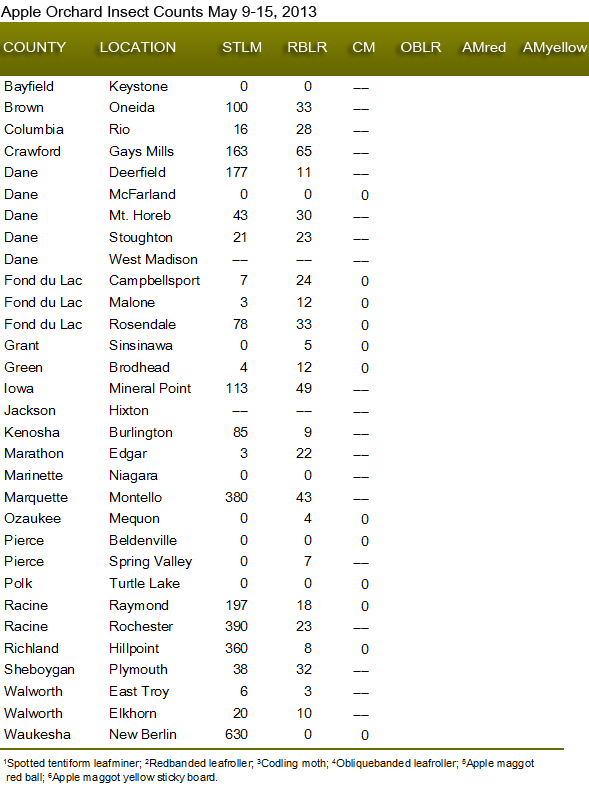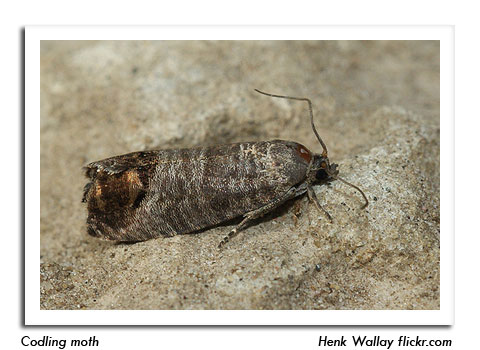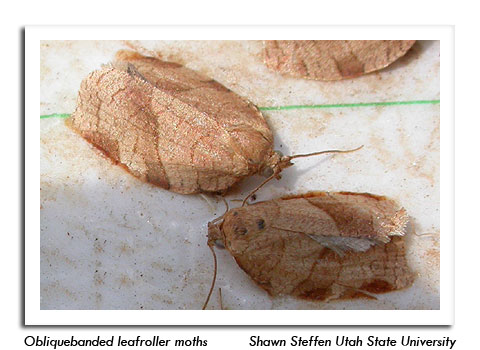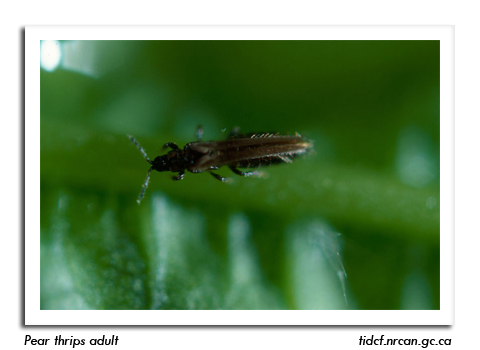
 |
|
|
Fruits
Volume 58 Number 3 Date 05/16/2013 CODLING MOTH - Apple growers are advised to place pheromone traps now to detect the first moths. Spring moth emergence could begin this weekend in locations where nightly temperatures exceed 62°F. Daily monitoring over the next two weeks will be required to document the "biofix" or sustained capture of moths. OBLIQUEBANDED LEAFROLLER - Larvae have resumed activity after overwintering under the bark of scaffold limbs and twigs. The ¼-inch, yellowish-green caterpillars with black head capsules are expected to feed for 2-3 weeks before pupating within leaf tubes. Scouting is recommended at this time. REDBANDED LEAFROLLER - The first flight has accelerated and egg deposition is under way. Small larvae should begin emerging next week. A recommended sampling method for this insect is to start monitoring for early-instar larvae on foliage and watersprouts 10-12 days after the first moth is registered. Late-instar larvae and pupae can be found by searching for folded leaves. An important diagnostic feature of RBLR is its uniform coloration (both the body and head are yellowish-green). Other leafrollers have black or darkened heads. SPOTTTED TENTIFORM LEAFMINER - First brood adults have been active for three or more weeks, and peak emergence has already occurred at some orchard locations. The optimal sample period for first generation sapfeeder larvae is 10-14 days after a peak capture is registered. Pheromone trap counts during the last week ranged widely from 0-630 moths, with the high reported from New Berlin in Waukesha County. PEAR THRIPS - An apple orchardist near Malone in Fond du Lac County has reported a recurrence of this insect in orchard blocks where problems were noted in past years. Similar to last season, the heaviest populations are concentrated in trees adjacent to wooded lots. No controls have been implemented as of May 15. A count of three or more thrips per fruit bud can cause abnormal leaf formation, leaf tatter, flower injury and reduced fruit set and is considered an economic population. -- Krista Hamilton, DATCP Entomologist 



|
|
|